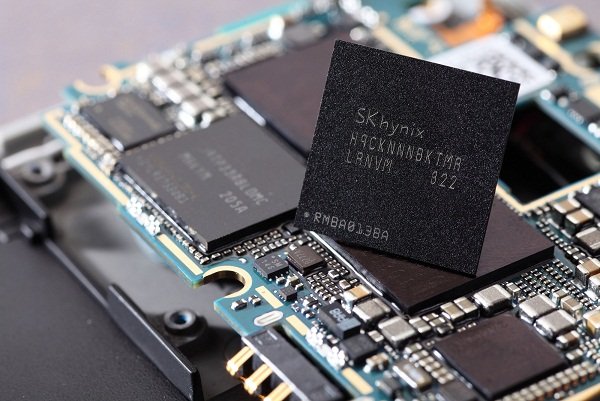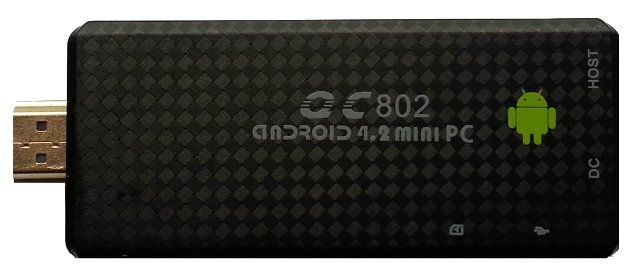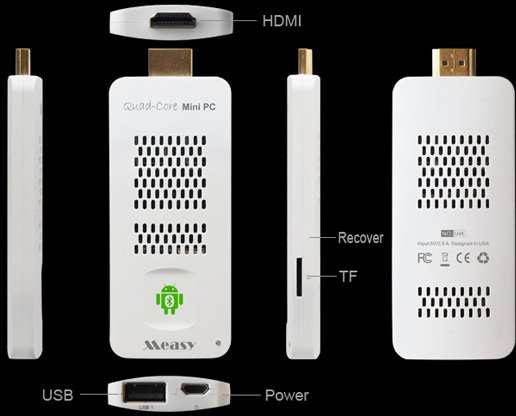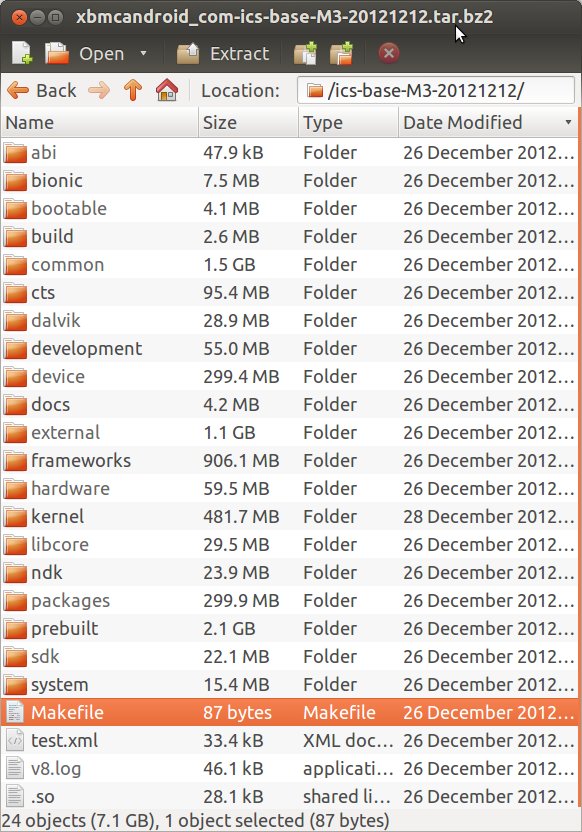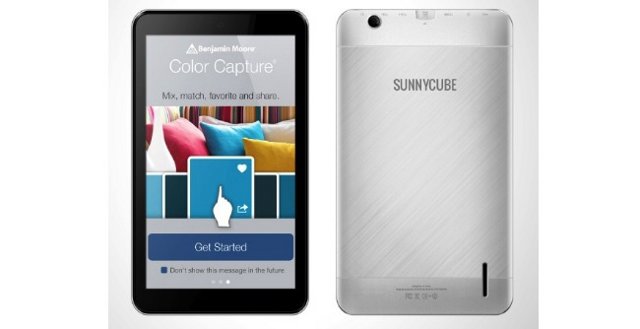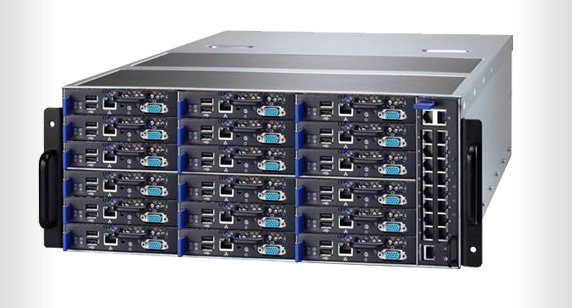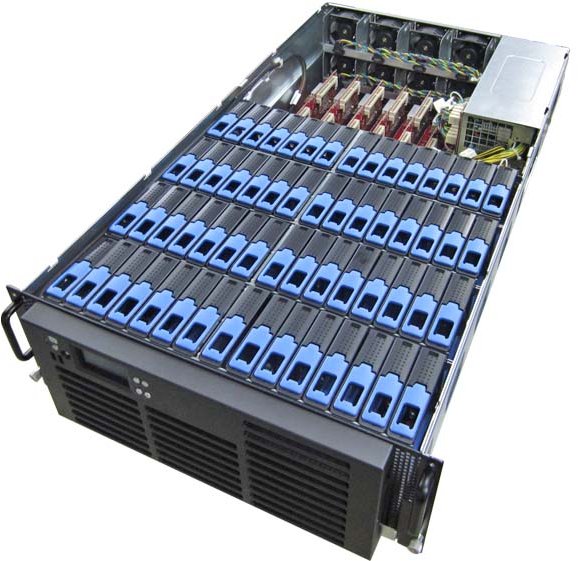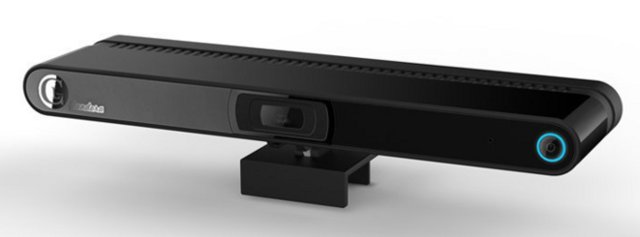More and more devices this year come with 2GB RAM in 4x 4Gbit configuration, and this is about the limit today because there aren’t 8Gbit (1GB) mobile RAM chipset available. This is about the change as Hynix has just announced they have developed 8Gbit LPDDR3 based on 20nm process technology. Hynix new memory can be stacked up to provide 4GB (Gigabyte) in a single package that can be provided as ‘PoP’ (Package on Package), or the memory can be bundled with eMMC. Existing LPDDR3 chipsets work at up to 1600Mbps, but Hynix memory will be able to achieve 2133Mbps data transmission speed, an increase of about 33 percent. That means it can process up to 8.5GB of data per second in a single channel, and 17GB in a dual channel using 32-bit I/O. Samples have already been shipped to customers, mass production should start at the end of this year, […]
Rockchip RK3188 Based QC802 mini PC Can Now Be Purchased for $65
When Rockchip RK3188 powered mini PC started to show up in March 2013, many were priced around $90, which some shops aggressively (and temporarily) pricing UG007B at $74. But it’s now possible to purchase QC802, a quad core mini PC with 2GB RAM and 8GB Flash, for just $61.75 excluding shipping from a seller with good feedback. Adding shipping will bring it to about $70 depending where you live, but applying “registernewbuyer5” coupon brings it back to $65 or even a bit less. QC802 is by far the cheap RK3188 device I’ve found. Just a quick reminder of the specs: SoC – Rockchip RK3188 quad core Cortex A9 @ 1.6 Ghz + Mali-400MP4 GPU System Memory – 2GB DDR3 Storage – 8 GB internal flash + micro SD slot (up to 32GB) Connectivity – Wi-Fi 802.11 b/g/n + Bluetooth 2.1 Video Output – HDMI (male) USB – 1x USB Host […]
Measy U4K – AllWinner A31 Powered Mini PC for 4K2K Video Playback
Apart from CS868, I had not seen other HDMI TV sticks based on AllWinner A31, the main reason being the performance to price ratio, with RK3188 devices cheaper than AllWinner A31 ones, and benchmarks such as Antutu showing better score for RK3188. 2D/3D performance is about the same as RK3188 (based on Antutu benchmark), despite A31’s PowerVR SGX544 MP2 GPU. So the only remaining advantage of A31 over RK3188 is 4K2K (UHD) video playback, which is probably why Measy called their A31 mini PC “Measy U4K”. Measy U4K Specifications: SoC – Allwinner A31 quad-core cortex A7 @ 1.0GHz + PowerVR SGX544MP2 GPU System Memory – 2GB dual channel 64-bit DDR3 Storage – 8GB Nand dual channel 16-bit Flash + micro SD card slot (Up to 32 GB) Connectivity – Wi-Fi 802.11 b/g/n (Ralink8188) + Bluetooth 4.0 USB – 1x micro USB OTG for power, and 1x USB 2.0 host Video Output […]
Geniatech Releases ATV510B Source Code, Teases Dual and Quad Core ATV130 and ATV180 mini PCs
XBMCHUB (not affiliated with XBMC) reports that Geniatech has released the Android and Linux source code for ATV510B, one of Geniatech set-top boxes based on AML8726-M3 Cortex A9 processor. ATV510B is the design used by devices such as Pivos XIOS DS, Jynxbox Android HD, Sumvision Cyclone Nano M3, and MyGica ATV510B Enjoy TV Nano 3, among others. Pivos has made U-boot, Linux and XBMC source code available in github for a little while now, but this new release is a pretty large file (2.39 GB) called xbmcandroid_com-ics-base-M3-20121212.tar.bz2 that includes Android 4.0 source including the kernel and the bootloader. This source code should work with “stvmc” hardware, as found in build.prop’s ro.product.name or ro.product.device keys. I haven’t looked into details, but here’s the content of the root directory of the archive: On a separate note, Geniatech also showed the picture below on their Facebook page, with 2 new Android TV Sticks: […]
WM8880-MID Dual Core Tablet is Now Available for $59
Remember SunnyCube V7 tablet with a dual core Cortex A9 SoC available for just $40 in China? I had a target between $50 to $55 on Aliexpress, but I’ve been explained I may have been too optimistic with shipping fees and the 5% seller fee in Aliexpress platform. Nevertheless, the device, or a similar device, based on WonderMedia WM8880 is now available for $59 including shipping on GeekBuying, which puts it in slightly higher price (~$7 more) than AllWinner A13 tablets, but with much more processing power, and HDMI output. Here are some updated specs: SoC – VIA WM8880 Dual core Cortex A9 processor @ 1.5GHz + Mali-400 MP2 GPU System Memory – 512MB DDR3 Storage – 4GB Flash + micro SD slot Display – 7-inch WVGA (800×480) display Video Output – HDMI port Video Playback – H.264, WMV, MPEG2/4, VP8 (up to 1080p) Connectivity – Wi-Fi 802.11 b/g Camera […]
MiTAC Announces 7-Star 64-Bit ARM Server Powered by Applied Micro X-Gene Server-on-Chip
After unveiling their GFX servers based on Marvell ARM Cortex A9 SoC at Computex 2012, Mitac announced their new 7-Star server at Computex 2013. This new server is based on Applied Micro X-Gene SoC featuring ARMv8 architecture, and is one of the first, if not the first, 64-Bit ARM server ever. The key features of Mitac Server are as follows: 18x Front-loaded Computing Blades in 4U (176mm x 440mm x 650mm) Server Blade Spec SSI uModule v1.0 complaint (1) ARMv8 compliant 64-bit SoC /blade (2) DDR3 DIMM slots, and (2) 2.5” SATA 3.0 HDD support (1) 10G SFP+ and (1) GbE port IPMI V2.0 compliant Pass-through Ethernet Module Chassis Management Hot-swap FAN and (2+1) RPSU support It will be available by the end of the year. That’s about all I know for now, but more information should eventually come up on Mitac 7-Star page. Via PC Perspective. Jean-Luc Aufranc (CNXSoft)Jean-Luc […]
Calxeda Showcases Aaeon and Foxconn ARM Servers at Computex 2013
ARM started to get involved in servers in 2011 with the announcements of Calxeda Energy Core, Marvell, and Applied Micro X-Gene Servers-on-a-Chip, and in 2012, products made by companies such as HP and Mitac started to appears. We’ve got to see some more ARM based servers this year thanks to Charbax, who filmed some Aaeon and Foxconn servers powered by Calxeda EnergyCore quad core ARM Cortex A9 SoC at Computex 2013. The first server is Aaeon Indus 1U cloud storage appliance: 1U Chassis 2x Calxeda Energycore nodes 10x 3.5″ HDD 2x 10 GbE uplinks and 4x 10GbE chassis-to-chassis interconnects Foxconn server shown at Computex has slightly higher specs: 4U chassis 12 Calxeda Energycore nodes 60x 3.5″ HDD for up to 240TB storage 4x 10 GbE uplinks and 6x 10 GbE chassis-to-chassis interconnects for 100 GbE total bandwidth There’s also a Gigabyte server, but I could get details. Server based on […]
Pandora TV Box is an All-in-One Android Media Player, Game Console, DVB Receiver, Video Chat System, etc…
This morning I received an email from DealExtreme with a link to a teaser video about an upcoming Android device to be available on June 10, that comes with a game controller (PS3 type) to play games. After some research, I finally found this “Android-on-TV” device which is based on Rockchip RK3066 with 1GB RAM, 8GB Flash, lots of ports (USB, HDMI, Ethernet), a webcam, and more. Beside the game controller, it also comes with a remote control, so the device can be used for a whole lot of applications including gaming, video chat, media player, web browsing, and more. It’s something you can already do with existing devices, but it may require some efforts, and this one seems to come all included. Here are the specs of the “beast”: SoC – Rockchip RK3066 dual-core processor @ 1.6GHz + MALI 400 MP4 GPU System Memory – 1GB DDR3 Storage – […]


